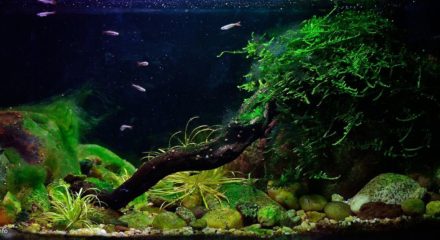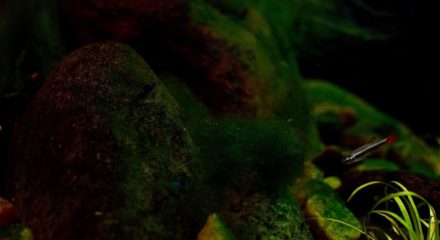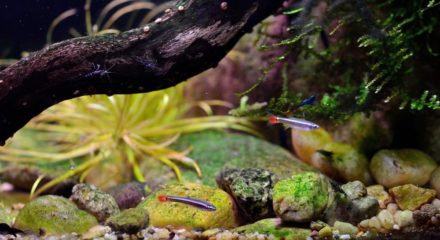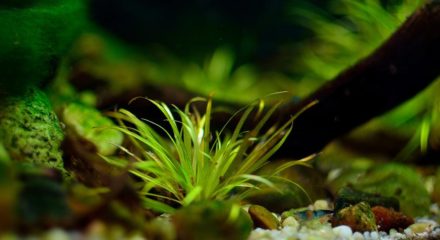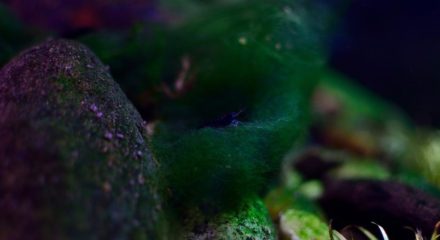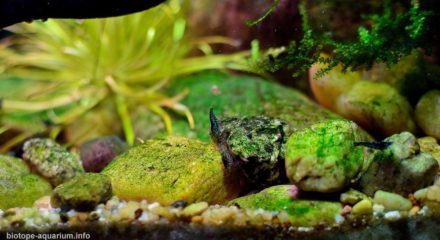Slowly moving small mountain creek, Xi Jiang drainage, Guangdong, China
35th place in Biotope Aquarium Design Contest 2016
![]() Poland. Kamil Hazy
Poland. Kamil Hazy
Aquarium Volume: 54 L
Fish and invertebrates: Tanichthys albonubes, Neocaridina sp.
Plants list: Blyxa japonica, Taxiphyllum sp. (moss)
Biotope description: Xi Jiang is the most important river in the southeast China. It’s drainage area has 426 000 square meters. This big area is full of biological live. The main river and its tributaries flows through few mountain ranges. In the mountains small creeks and rivers, that are not heavy polluted, gives home for many fish and crustaceans. Karst mountains specify the water parameters, which is neutral to alkaline and it’s hardness is on the mid to up levels. Each creek has shallow parts with very fast flow of water, where almost only different types of loaches live, and some deeper parts where water moves a bit slower. This slower parts is still cool and well oxygenated, so there is a good place to live for Cyprinidae fish and shrimps. Rocky bottom covered with algae, some occasionally driftwood, few plants beside the banks and still big enough flow of water to move small food parts gives perfect spot for population grow. Neocaridina species can grow it’s numbers very fast when there is enough food and many hiding places. Different fractions of rocks and moss that grows on driftwood and side stones gives a perfect hiding place for juveniles. Even small Tanichthys species can’t eat all of them, but small crustaceans (like juvenile shrimp) is still one of their main food source. When no other bigger predators occurs in the body of water small Cyprinidae and shrimps can live together quite well and build up the populations.
Fish and invertebrates: Tanichthys albonubes, Neocaridina sp.
Plants list: Blyxa japonica, Taxiphyllum sp. (moss)
Biotope description: Xi Jiang is the most important river in the southeast China. It’s drainage area has 426 000 square meters. This big area is full of biological live. The main river and its tributaries flows through few mountain ranges. In the mountains small creeks and rivers, that are not heavy polluted, gives home for many fish and crustaceans. Karst mountains specify the water parameters, which is neutral to alkaline and it’s hardness is on the mid to up levels. Each creek has shallow parts with very fast flow of water, where almost only different types of loaches live, and some deeper parts where water moves a bit slower. This slower parts is still cool and well oxygenated, so there is a good place to live for Cyprinidae fish and shrimps. Rocky bottom covered with algae, some occasionally driftwood, few plants beside the banks and still big enough flow of water to move small food parts gives perfect spot for population grow. Neocaridina species can grow it’s numbers very fast when there is enough food and many hiding places. Different fractions of rocks and moss that grows on driftwood and side stones gives a perfect hiding place for juveniles. Even small Tanichthys species can’t eat all of them, but small crustaceans (like juvenile shrimp) is still one of their main food source. When no other bigger predators occurs in the body of water small Cyprinidae and shrimps can live together quite well and build up the populations.

